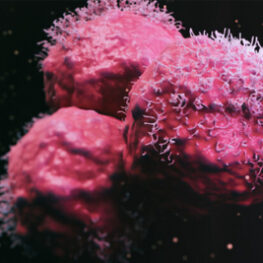Some diseases can be diagnosed by identifying physical changes in tissue, such as the hardening of
arteries during heart disease. Diseased cells often exhibit different mechanical characteristics, or
mechanotypes, than normal cells. Efficient tools for measuring mechanotypes could allow doctors to
diagnose diseases at an early stage, predict whether a tumor might metastasize, and identify effective
drugs and genes linked to certain diseases.
In a promising development for cancer screening and treatment, groundbreaking research published in
Nature Communications by a team of U of M researchers from the Medical School and College of
Biological Sciences has led to a new laboratory test to measure cell mechanotypes quickly and easily.
Cells constantly move through the body and interact with other cells. Cancer cells may move more
aggressively than other cells, in some cases pulling on the tissue around them. Metastatic cancer cells
sometimes exhibit less pull than others. In the past 25 years, scientists have evaluated these pulling forces with tools like microscopy, which are effective but difficult to use and time-intensive, resulting in
bottlenecks for cancer research.
The research team wanted to develop a more rapid method of evaluation. They discovered:
By using tension gauge tethers (TGTs), or small bits of double-stranded DNA that break apart when cells
attach and pull on them, they were able to evaluate how different types of cancerous cells differentially
break apart the DNA.
By attaching fluorophores to TGTs that get delivered into the cells interacting with the TGTs, they can
evaluate thousands of cells quickly without microscopy and also sort cells according to their
mechanotype.
The RAD-TGT (“Rupture and Deliver Tension Gauge Tethers”) tool can differentiate between
mechanotypes among mixed populations of cells, opening up the possibility of identifying genes linked to diseases.
“We can measure thousands of cells’ fluorescence in minutes using an instrument called a flow cytometer and then isolate the cells by their distinct mechanotype,” said author Wendy Gordon, associate professor of biochemistry, molecular biology and biophysics. “We are now working to use this assay to study the mechanotypes of several different cancers.”
The RAD-TGT tool also helps evaluate problematic cells at different states. For example, in a
metastasizing cancer, the cancer cells may become squishy to squeeze through blood vessels and enter
other parts of the body. In that case, a drug that makes cells more firm could be beneficial. This tool will
help researchers evaluate the varying states of the disease and cell progression.
Funding was provided by the National Institutes of Health.
